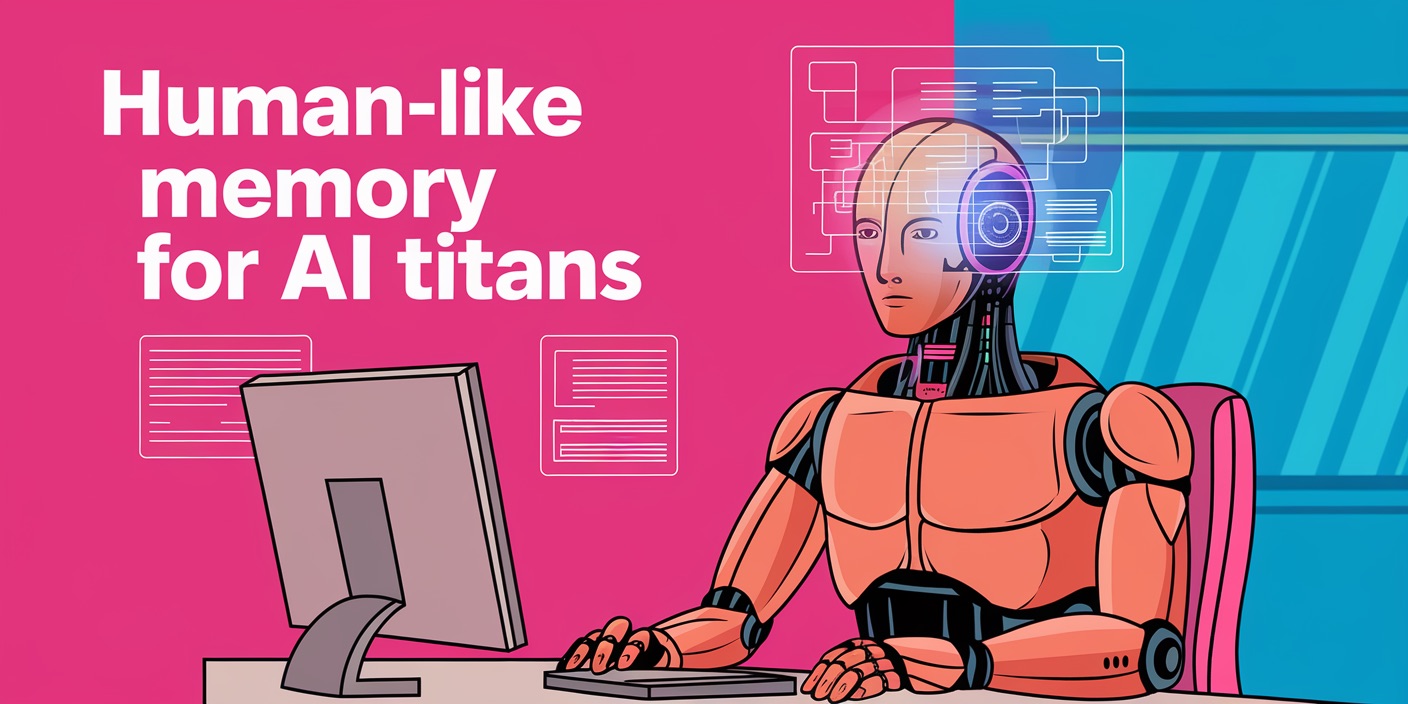“Titans: Learning to Memorize at Test Time” by Google Research introduces a groundbreaking approach to AI memory, aiming to revolutionize how models process and retain information by mimicking human memory mechanisms. Below is a detailed breakdown and analysis of the key insights:
Why Titans Matter: Breaking Free of Transformer Limitations
Transformers, the architecture behind GPT and other state-of-the-art models, revolutionized AI by leveraging the attention mechanism. However, they face a significant limitation: context window constraints due to quadratic scaling in computational complexity. This restricts models to processing only a fixed length of input data, creating challenges for applications that require reasoning over long sequences, such as video understanding, genomics, or long-term forecasting.
Titans aim to eliminate these limitations by introducing a memory framework that operates during inference (test time) rather than being baked into the pre-trained model. This approach aligns closely with how humans process memory—using short-term, long-term, and persistent memory to manage and adapt to new information dynamically.
The Memory Revolution: Drawing Inspiration from Human Cognition
Titans’ architecture emulates the human brain’s memory systems:
-
Core Memory (Short-Term): Handles immediate tasks, akin to working memory, ensuring efficient real-time data processing.
-
Long-Term Memory: Stores abstracted historical information, preserving essential patterns without the need to recall every detail.
-
Persistent Memory: Encodes immutable, task-specific knowledge—think of it as the “fundamental rules” a model must always know.
Surprise as a Memory Driver
One of the paper’s most intriguing innovations is the “surprise metric.” Inspired by human cognition, this mechanism prioritizes the storage of unexpected or novel events. When the model encounters data that deviates significantly from its expectations, it marks it as highly memorable. This ensures the system focuses on critical, unexpected information while allowing routine or predictable data to fade over time.
Example: Imagine driving on a familiar route. You might not remember every detail, but a sudden tire falling from the sky would be unforgettable. Titans use a similar principle, dynamically adjusting memory focus based on the significance of new inputs.
Memory Management: Decay and Forgetting
To prevent overloading memory and degrading performance, Titans employ an adaptive forgetting mechanism. This ensures the model can prioritize relevant data while discarding less critical information. It dynamically balances the surprise factor with available memory capacity, enabling efficient long-term operations even with vast datasets.
Implementation: Three Variants of Memory Integration
Titans explore three architectural strategies, each with trade-offs:
-
Memory as Context (Mac):
-
Functions like a personal assistant taking notes, recalling relevant details when needed.
-
Best suited for tasks requiring detailed historical references.
-
Memory as a Gate (Mag):
-
Operates with two advisors: one focused on immediate context (short-term memory) and another on historical data (long-term memory).
-
A gatekeeper dynamically decides how much weight to assign to each source, ensuring balanced decision-making.
-
Memory as a Layer:
-
Processes data sequentially through memory “filters,” each layer focusing on different types of memory.
-
Provides a modular approach to integrating multiple memory types.
Performance Highlights
Experimental results show that Titans outperform existing architectures like Transformers and modern recurrent models across various tasks:
-
Benchmarks: Titans excelled in language modeling, commonsense reasoning, genomics, and time-series tasks, demonstrating consistent performance even with context windows exceeding 2 million tokens.
-
Needle-in-a-Haystack Tests: Titans maintained accuracy in retrieving information buried deep within extensive contexts, while other models’ performance degraded significantly.
Implications and Opportunities
The introduction of Titans signals a paradigm shift in AI capabilities. Here’s why it matters:
-
Enhanced Real-World Applications:
-
Video Analysis: Long-term memory could revolutionize tasks requiring analysis of hours of footage.
-
Healthcare: Genomic data analysis and patient history modeling could benefit from Titans’ memory handling.
-
Personal Assistants: Dynamic, real-time memory updates could lead to smarter, more context-aware AI assistants.
-
Ethical and Practical Considerations:
-
The ability to “memorize” at test time raises questions about privacy and data security. Robust safeguards must be implemented to prevent models from retaining sensitive information.
-
Developers must strike a balance between memory retention and generalization to avoid overfitting or biased outputs.
-
Future Research Directions:
-
How can Titans handle tasks requiring collaborative memory updates across distributed systems?
-
Could the “surprise metric” be further refined to better mimic emotional or contextual prioritization in human memory?
Final Thoughts
“Titans: Learning to Memorize at Test Time” introduces a transformative framework for AI memory, drawing from human cognitive processes to address long-standing limitations in sequence modeling. By focusing on dynamic memory updates, surprise-driven retention, and adaptive forgetting, Titans promise to expand AI’s potential in long-context tasks.
